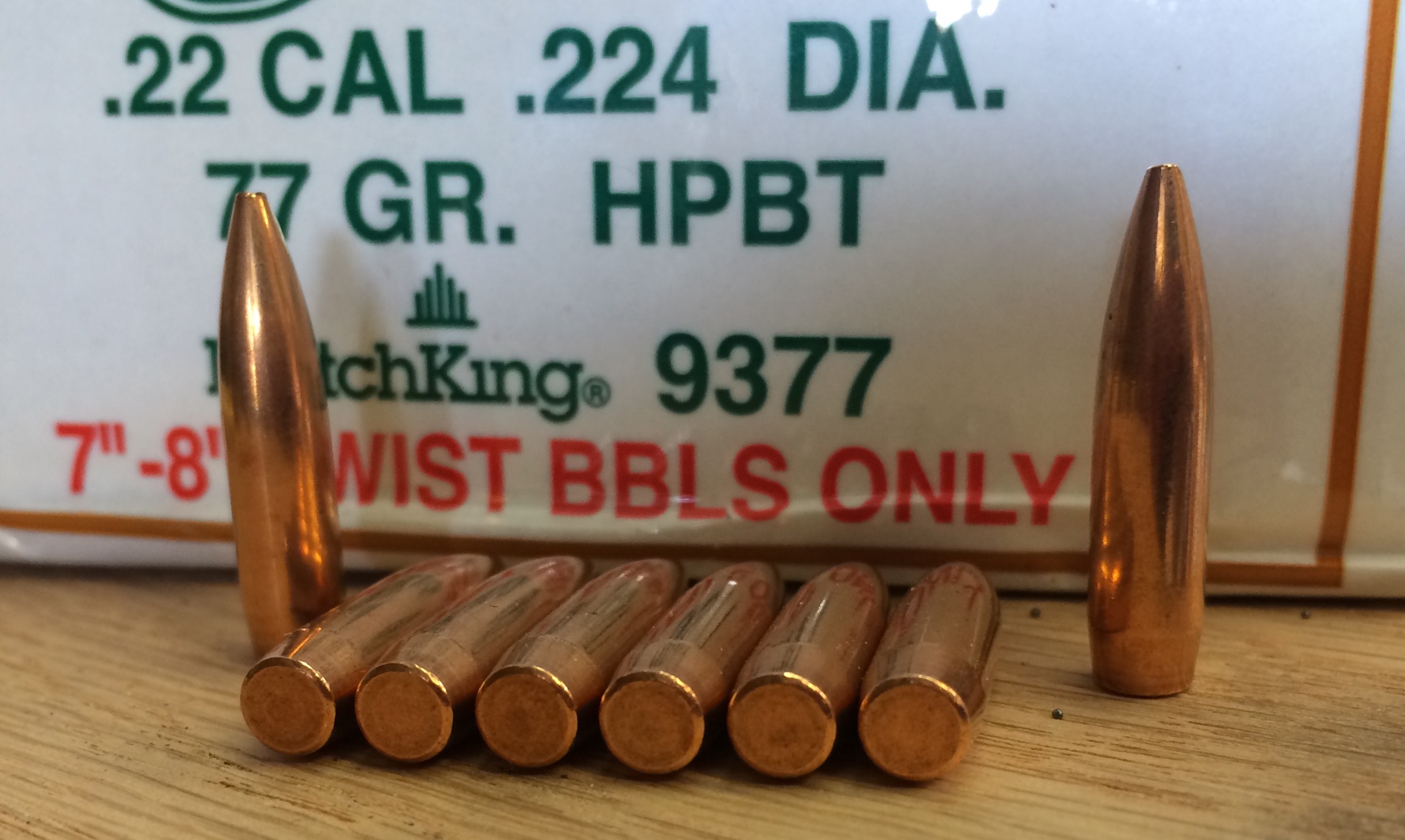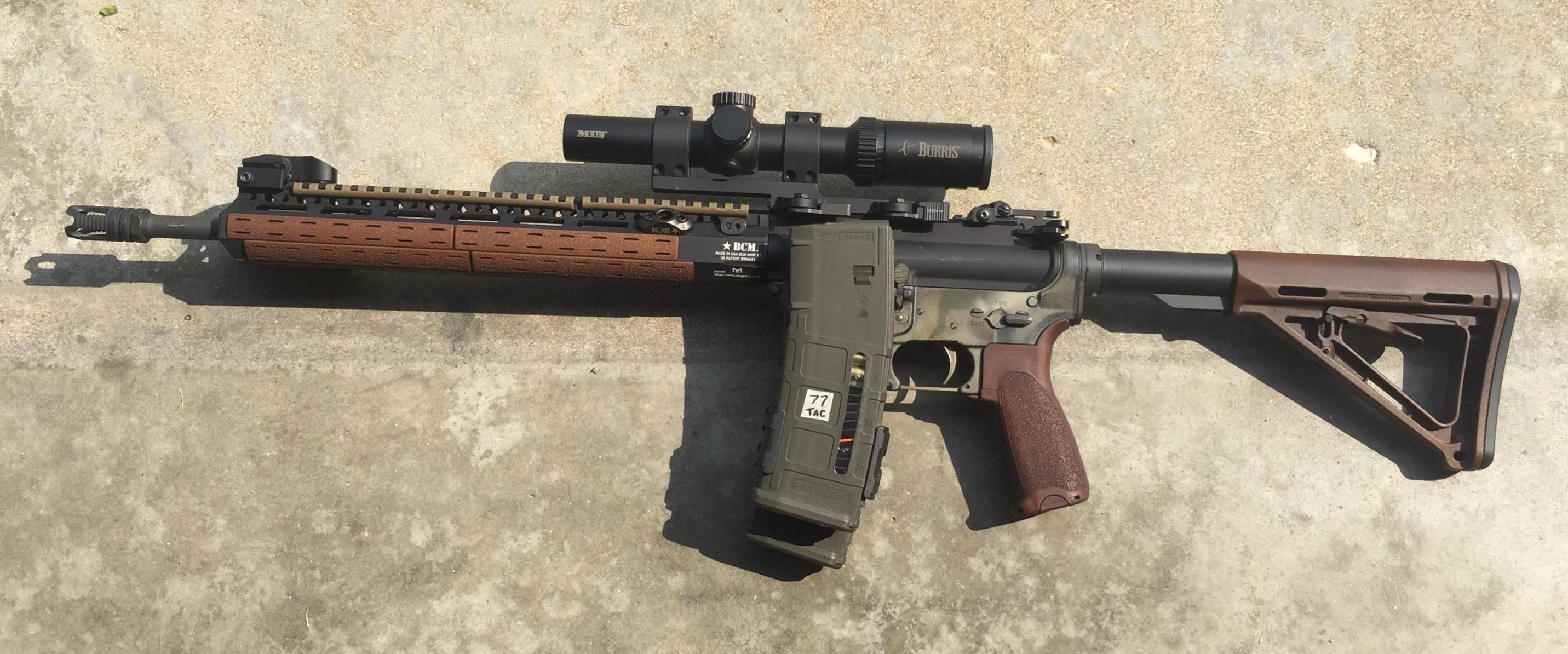You are using an out of date browser. It may not display this or other websites correctly.
You should upgrade or use an alternative browser.
You should upgrade or use an alternative browser.
357 Magnum vs 5.56x45 in carbines
- Thread starter westernrover
- Start date
Of course there's a giant flaw in RII, there's no requirement for adequate penetration.This video is dated but the information remains valid today. It discusses the many flaws of the RII:
Deadly Effects: Wound Ballistics - What Bullets do to Bodies
See - https://m.youtube.com/watch?v=5AhcuLWIe3A
Couldn't get all the way thru video. In typical fashion they make several correlation=causation jumps overlooking obvious details.
That's not necessarily the case. 45-70 300 gr. Jacketed Hollow Point by Buffalo Bore gets you a permanent wound cavity at 2,350 fps for a bit. Some hot hand loads will produce an even larger permanent wound cavity. There's 45-70 and then there's 45-70 +p+The point you are missing - is that the 5.56 NATO, along with the crush cavity, also has a sizable Permanent wound cavity, about the size of a grapefruit.
The 45-70 does not.
I have a .357 lever gun and often grab it rather than an AR when I'm just going humping around in the woods; but we're talking about a defensive firearm where you may be defending against one or more assailants/animals.
All sorts of arguments can be made for both cartridges, but I'll take an AR loaded with some flavor of 77gr rounds in a 30 round mag, allowing me to lay down fast accurate fire with a rifle that was designed to lay down fast accurate fire.
Make no mistake, the 5.56 can be devastating.
All sorts of arguments can be made for both cartridges, but I'll take an AR loaded with some flavor of 77gr rounds in a 30 round mag, allowing me to lay down fast accurate fire with a rifle that was designed to lay down fast accurate fire.
Make no mistake, the 5.56 can be devastating.
Gun-Reck
Member
- Joined
- May 16, 2023
- Messages
- 557
Bovine feces.
Unfortunately Fackler was an physician and not a physicists.
The elasticity of tissue can most definitely be exceeded well under 2200 FPS.
If he was better versed he would have put the threshold in terms of kinetic energy as the direct comparison of how much kinetic energy is converted to elastic energy would directly affect the size of the expanded cavity and then determine if tearing would be likely to occur.
As to what is permanent and what is temporary you're trying to measure a line that doesn't really exist.
Here is some reading for you as well, if you are interested.
Man I tried but the history section at the start was rife with errors.Here is some reading for you as well, if you are interested.
Gun-Reck
Member
- Joined
- May 16, 2023
- Messages
- 557
Man I tried but the history section at the start was rife with errors.
As long as you missed the pertinent parts, about wounds and game killing.
C-grunt
Member
Ive never seen someone take a 223/5.56 in the torso and be okay. No matter what bullet was used. Even the cheap 55 grain steel case stuff dumps people with authority. Now, when barriers get involved the performance obviously deteriorates a bit. How much depends on many variables such as what the barrier is, the bullet used, distance, the target behind, etc...
I did see one guy take a 55 grain hollow point through the forearm (shattered both bones) which then hit him in the chest. He ran about 5 yards before going down.
For hunting I would look at the heavier weight bonded bullets or the monolithic bullets. Those also work well for defensive use too.
Ive never hunted with a 357 lever gun but a good heavy bullet close to 2000 FPS is a pretty potent loading. However the trajectory will probably be pretty bad past about 100-150 yards.
I did see one guy take a 55 grain hollow point through the forearm (shattered both bones) which then hit him in the chest. He ran about 5 yards before going down.
For hunting I would look at the heavier weight bonded bullets or the monolithic bullets. Those also work well for defensive use too.
Ive never hunted with a 357 lever gun but a good heavy bullet close to 2000 FPS is a pretty potent loading. However the trajectory will probably be pretty bad past about 100-150 yards.
Shawn Dodson
Member
- Joined
- Dec 28, 2002
- Messages
- 3,195
"Effective Game Killing" is full of errors and myths.
"The hydrostatic shock created by a hunting bullet is identical in action to when a boxer is struck on the jaw by his opponent, disrupting the functions of the brain with a resulting loss of consciousness."
Nope. A knockout punch causes the skull to quickly move, which causes the brain to violently collide against hard cranial bone producing a concussion that results in loss of consciousness. For example:

The paragraphs "Mechanisms" and "Fast Killing" present these gems:
- Kinetic energy transfer
- Electrical shock wave
- Hydrostatic shock
- Strasbourg tests
- Wound channels
- Shock waves traveling through flesh to distant nerve centers
- Hydraulic shock ("...the pressure of accelerated fluid particles that create the temporary wound channel.")
Gun-Reck
Member
- Joined
- May 16, 2023
- Messages
- 557
Ive never seen someone take a 223/5.56 in the torso and be okay. No matter what bullet was used. Even the cheap 55 grain steel case stuff dumps people with authority. Now, when barriers get involved the performance obviously deteriorates a bit. How much depends on many variables such as what the barrier is, the bullet used, distance, the target behind, etc...
I did see one guy take a 55 grain hollow point through the forearm (shattered both bones) which then hit him in the chest. He ran about 5 yards before going down.
For hunting I would look at the heavier weight bonded bullets or the monolithic bullets. Those also work well for defensive use too.
Ive never hunted with a 357 lever gun but a good heavy bullet close to 2000 FPS is a pretty potent loading. However the trajectory will probably be pretty bad past about 100-150 yards.
M193:
The damage caused by the 5.56 mm bullet [M193} was originally believed to be caused by "tumbling" due to the slow 1 turn in 14-inch (360 mm) rifling twist rate.[43][58] However, any pointed lead core bullet will "tumble" after penetration into flesh, because the center of gravity is towards the rear of the bullet.
The large wounds observed by soldiers in Vietnam were caused by bullet fragmentation created by a combination of the bullet's velocity and construction.[60] These wounds were so devastating that the photographs remained classified into the 1980s.[61]...
... The original ammunition for the M16 was the 55-grain M193 cartridge. When fired from a 20 in (510 mm) barrel at ranges of up to 300 feet (100 m), the thin-jacketed lead-cored round traveled fast enough (above 2,900 ft/s (880 m/s))...
that the force of striking a human body would cause the round to yaw (or tumble) and fragment into about a dozen pieces of various sizes thus created wounds that were out of proportion to its caliber.[142][143]
These wounds were so devastating that many considered the M16 to be an inhumane weapon.[146][147][148]
As the 5.56 mm round's velocity decreases, so does the number of fragments that it produces.[24] The 5.56 mm round does not normally fragment at distances beyond 200 meters or at velocities below 2500 ft/s, and its lethality becomes largely dependent on shot placement.[24][143]
Gun-Reck
Member
- Joined
- May 16, 2023
- Messages
- 557
"Effective Game Killing" is full of errors and myths.
"The hydrostatic shock created by a hunting bullet is identical in action to when a boxer is struck on the jaw by his opponent, disrupting the functions of the brain with a resulting loss of consciousness."
Nope. A knockout punch causes the skull to quickly move, which causes the brain to violently collide against hard cranial bone producing a concussion that results in loss of consciousness. For example:
View attachment 1183989
The paragraphs "Mechanisms" and "Fast Killing" present these gems:
"Effective Game Killing" makes for entertaining reading but it's chock full of misinformation.
- Kinetic energy transfer
- Electrical shock wave
- Hydrostatic shock
- Strasbourg tests
- Wound channels
- Shock waves traveling through flesh to distant nerve centers
- Hydraulic shock ("...the pressure of accelerated fluid particles that create the temporary wound channel.")
Opinions are like that.
He's probably killed 100 times more game than every hunter you've ever met.
Velocity
This has the greatest effect on hydrostatic shock. Put simply, the higher the impact velocity, the greater the shock. Velocity is also the most influencing factor in hydraulic shock, having a huge bearing on the size of the internal wound channel.Hydrostatic shock, in bore sizes from .243” up to .338”, begins to lesson at impact velocities below 2600fps and most modern high velocity sporting cartridges including the magnums gradually lose shocking power beyond 300 to 350 yards. Of the thousands of animals harvested during TBR tests, 2600fps has been the most common cut off point with repeatable results (reactions) occurring when deliberately testing the impact velocity of 2650fps versus the impact velocity of 2550fps.
High velocity is not however a sole factor to be worshipped and held above other factors. For example, if velocity is increased too far without increasing bullet weight, the surface tension of water within the animal can cause so much resistance as to overcome the energy of the bullet. Ultra-high velocities can then also lead to shallow penetration. Generally speaking, the high velocity cut off point for small bore bullets used on medium game is around 3150fps. If for example we are using a 140 grain 7mm bullet at an impact velocity of 3250fps, chances are that even if the bullet penetrates vitals, the animal may still run some distance.
One factor to be very careful of with ultra-high velocity conditions is to not blame a delayed kill exclusively on ‘bullet blow up’. For example, if we were using the same 140gr 7mm bullet and the entry wound did indeed show signs of wide entry wounding and surface bullet blow up (or possibly blow back), even though this is undesirable performance, we still need to investigate further if we are to truly understand factors at play. In this instance, once the animal is recovered, it is important to study the vital organs and determine whether they were actually destroyed. If the vitals were destroyed, we can then conclude that the bullet did its job (even if in a less than desirable manner) but without hydrostatic shock.
A noticeable change in hydrostatic shock occurs as bullet diameter is increased to .358” (such as the .35 Whelen) and larger bores (see bullet diameter). With the medium and large bores, hydrostatic shock can occur on our medium game species at velocities as low as 2200fps. Fast incapacitation can remain evident at velocities as low as 1800fps depending on bullet designs. Below 1800fps, the wider the bore the better. Further to this, there are also highly traumatic pistol bullet designs such as the Hornady XTP.
Frangible bullets tend to produce coma at much lower velocities than traditional hunting bullets (see bullet construction). With frangible bullets at low velocities, instant coma may be due to hydraulic shock causing blood pressure spikes in the brain as suggested by Hornady ballisticians. In other instances, coma can follow very shortly after impact due to multiple pain centers being disrupted to such an extent that the animal must go into coma. That said, frangible bullets may also send out particles which strike the CNS directly.
When testing hydrostatic shock on Bovines, I have discovered that impact velocities of 2600fps with suitable bullet weights (and construction) produced instant poleaxe in a repeatable manner. However, in many instances Bovines would attempt to rise, the action of attempting to rise resulting in increased blood loss with death following within seconds.
Shawn Dodson
Member
- Joined
- Dec 28, 2002
- Messages
- 3,195
There's no such thing as "hydrostatic shock" in wound ballistics.
He may have killed a lot of animals and studied the wounds, but, unfortunately, he's way out of his lane when trying to explain physiological effects of gunshot wounds, and the physics involved.
He may have killed a lot of animals and studied the wounds, but, unfortunately, he's way out of his lane when trying to explain physiological effects of gunshot wounds, and the physics involved.
Last edited:
He's probably killed 100 times more game than every hunter you've ever met.

Convention - Dallas Safari Club
Registration is now open for DSC Convention & Sporting Expo 2024! Act now and purchase your Day Passes and Banquet tickets… REGISTER NOW The DSC Convention and Sporting Expo is one of the biggest conservation fundraising events in the US. Over the past several years, the event has generated...
www.biggame.org
35 Whelen
Member
The problem with the 5.56x45 which no one talks about is its serious lack of penetration potential with those small bullets. Yes, one can use heavier bullets, but even then there's a limit and when you gain penetration, you lose wound channel size. A .358" 158 gr. bullet has roughly the same sectional density as a .224" 60 gr. bullet, but in addition to its much larger frontal area and therefore larger wound track, said .358" bullet has over 2.5 TIMES the mass of the .224 bullet, which equates to more penetration.
35W
35W
Gun-Reck
Member
- Joined
- May 16, 2023
- Messages
- 557
"When You Tell Somebody Somethin', It Depends On Which Part Of The United States You're Standing In As To Just How Dumb You Are."
Bandit from Smokey and the Bandit.
So - denial, opinion, Hollywood movie script quotes, and finally insults.
"Truth is incontrovertible.
Panic may resent it. Ignorance may deride it. Malice may distort it.
But there it is."
- Winston Churchill -
Panic may resent it. Ignorance may deride it. Malice may distort it.
But there it is."
- Winston Churchill -
Facts and evidence, on the other hand, would be appreciated.
CraigC
Sixgun Nut
People don't seem to consider mass at all. Only energy, which is a big problem.The problem with the 5.56x45 which no one talks about is its serious lack of penetration potential with those small bullets. Yes, one can use heavier bullets, but even then there's a limit and when you gain penetration, you lose wound channel size. A .358" 158 gr. bullet has roughly the same sectional density as a .224" 60 gr. bullet, but in addition to its much larger frontal area and therefore larger wound track, said .358" bullet has over 2.5 TIMES the mass of the .224 bullet, which equates to more penetration.
35W
d2wing
Member
- Joined
- Nov 10, 2008
- Messages
- 6,416
+1What are you all looking for. OK for short range guns. I've killed yard goats with both and wouldn't grab either if a deer rifle was close
481
Member
- Joined
- Feb 22, 2009
- Messages
- 2,415
There's no such thing as "hydrostatic shock" in wound ballistics.
He may have killed a lot of animals and studied the wounds, but, unfortunately, he's way out of his lane when trying to explain physiological effects of gunshot wounds, and the physics involved.
The claims made in the Effective Game Killing article remind me of when Courtney attempted to convince anyone who would listen to him that his newly coined term BPW (blast pressure wave) was a remote wounding mechanism when in fact it was really nothing more than the Hugoniot shock front that precedes an object as it strikes and penetrates a target material.
For those unfamiliar with the concept, the Hugoniot shock front velocity (and the dynamic pressure associated with its passage) is dependent upon the target material's bulk modulus (K), mass density (ρ), and internal sonic velocity (co) and are expressed as EOS. EOS, or equations of state, are mathematical equations that describe the nature of the Hugoniot shock front in terms of the target material's bulk modulus, mass density, and internal sonic velocity.
The value of Hugoniot shock EOS is that they can be used to establish the dynamic equivalence of soft tissue simulants to human soft tissues based upon their respective physical and acoustic properties.
Hugoniot EOS are usually—but not always—expressed as linear equations and take the form of—
U = co + Sv
—where the equation’s intercept value, co, is the medium's temperature-dependent internal sonic velocity (in km/s), the equation’s slope, S, is a first-order derivative of the medium’s bulk modulus (K) expressed in N/m², v is particle velocity (in km/s), and U is the shock Hugoniot velocity (in km/s).
Human Adipose Tissue: U = 1.465 + 1.781v
Skeletal Muscle: U = 1.547 + 2.136v
H2O: U = 1.483 + 1.867v
10% Type 250-A ordnance gelatin: U = 1.513 + 2.024v
The slope and intercept values of all four EOS are very close to one another (low divergence) indicating that there is considerable similitude and dynamic equivalence amongst all four mediums. The Hugoniot EOS of the two types of human soft tissues listed above are comparable to those of water and 10% Type 250-A ordnance gelatin making them both suitable for use as soft tissue simulants in terminal ballistic testing.
Last edited:
d2wing
Member
- Joined
- Nov 10, 2008
- Messages
- 6,416
Nope he is not. If your opinion is based on the opinions of a man that never shot anything but targets and made up most of everything he wrote it's not worth anything.There's no such thing as "hydrostatic shock" in wound ballistics.
He may have killed a lot of animals and studied the wounds, but, unfortunately, he's way out of his lane when trying to explain physiological effects of gunshot wounds, and the physics involved.
d2wing
Member
- Joined
- Nov 10, 2008
- Messages
- 6,416
At first I was bothered by gaps in history but the more I read the more I realized that He absolutely knew the subject very well. He explained a few things that I often wondered about. And yes. Some of his information is confirmed by actual professional researchers and ballistic experts. Not stuff he made up on his own because he and his buddies hated a military weapon.
AJC1
Member
Your not getting that velosity or bullet problems with a 158. If your using a smaller lighter bullet compare performance to a 40 grain varmint bullet in 223.Probably, I haven't used any on game, but I bought some with that in mind. Just need to be aware that most .357 components are designed to work in revolvers typically giving you 1400fps, but carbines can get you up 1900-2100fps. Bullets that expand reliably out of a 2" LCR, might hold up fine in a 16" 92, but they weren't designed to, and you may well experience jacket separation, fragmentation, and poor penetration.
Shawn Dodson
Member
- Joined
- Dec 28, 2002
- Messages
- 3,195
Your ignorance is on display yet again.Nope he is not. If your opinion is based on the opinions of a man that never shot anything but targets and made up most of everything he wrote it's not worth anything.
Fackler was an avid hunter, beginning when he was a child growing up in Pennsylvania. In addition, he was a combat surgeon in Vietnam with substantial experience treating gunshot wounds.
Last edited:
entropy
Member
Probably most of them being from 123 gr. .30 Cal. FMJ, with the odd 154 gr .30 FMJ, from AKs, SKSs, and Mosins/PK MGs and some 12.7mm here and there.
I just know what I've seen from opening the thoraxes of deer shot from 10 to 225 yards with 55 gr. V-Max bullets- it looks like a grenade went off in there, jellied lung. The deer don't go more than a few steps. They penetrate deer ribs just fine at those distances, and human ribs aren't that much more solid.
I just know what I've seen from opening the thoraxes of deer shot from 10 to 225 yards with 55 gr. V-Max bullets- it looks like a grenade went off in there, jellied lung. The deer don't go more than a few steps. They penetrate deer ribs just fine at those distances, and human ribs aren't that much more solid.
Similar threads
- Replies
- 2
- Views
- 455
- Replies
- 94
- Views
- 21K





